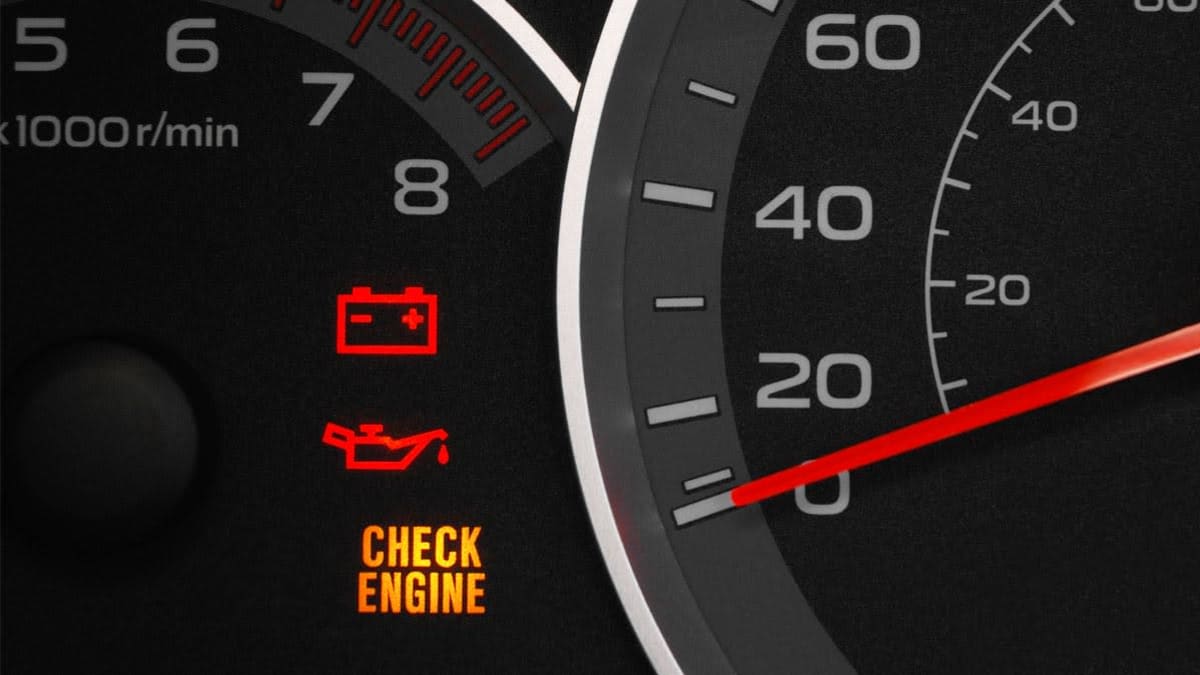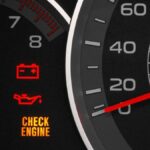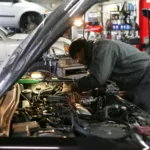Properly maintaining your car is key to keeping it in good, working condition. It can also help ensure your safety, the safety of your passengers and other drivers on the road. Here’s a list of 11 things you can check to help keep your car running smoothly:
- Check tire pressure and rotate tires
- Check the motor oil
- Check other important fluids
- Test the headlights and taillights
- Check and replace windshield wipers
- Check the engine air filter
- Check the cabin air filter
- Test the battery
- Inspect the brakes
- Check belts and hoses
- Wash your car
Vehicle upkeep can help prevent expensive repairs and retain a car’s value when it’s time to sell or trade it in, according to Kelley Blue Book (KBB). Some routine car care tasks can be done at home, while others may require a trained technician or mechanic. For instance, if your check engine light comes on, a mechanic can help diagnose the problem through the car’s on-board diagnostics (OBD-II) with a scan tool – something the average person typically doesn’t have at home.
A qualified repair shop will also be able to inspect and replace other core components like the alternator, wheel bearings, etc. Scheduling regular tune-ups can help ensure that your car gets other maintenance items repaired as well before they lead to serious issues.
It’s good to bring your car in at least once a year for a check-up, according to KBB. Always refer to your vehicle owner’s manual for a more accurate maintenance schedule. But certain maintenance items may require more frequent or immediate check-ups, while others may only need inspection every couple of years, depending on your specific vehicle, adds KBB.
Depending on your specific car, certain maintenance can usually be done every 5,000 to 10,000 miles, according to Bankrate:
- Oil changes
- Tire rotation
- Wiper replacement
- Brake pad replacement
However, there are other things that will need immediate attention if they happen, to prevent major issues – some of these include:
- Check-engine lights
- Broken headlights
- Low tire pressure
Other car maintenance items may be examined less often, according to KBB. A few of these include:
- Vehicle battery
- Chassis, steering and suspension system lubrication
- Transmission fluid
- Fuel filter
- Spark plugs, plug wires, etc.
- Exhaust system
Here’s our full list of maintenance checks that can help keep your car in good shape, plus maximize your resale value if and when the time comes.
Knowing how to maintain your car’s tire pressure can help reduce wear on the tires and helps ensure you’re getting better gas mileage. Checking your tire pressure includes finding the recommended pressure in pounds per square inch (PSI), checking each tire and inflating or deflating them accordingly.
A flat tire is a hazard that can be dangerous to you and your car. There are several preventative steps you can take to help avoid a blowout, including rotating your tires every 5,000 to 10,000 miles and watching for tire recalls.
Routinely checking and changing your car’s motor oil is essential to keeping an engine in good, running condition. Check your oil level each month and change it as directed in your car’s owner’s manual (typically in a certain time frame or a certain number of miles driven).
You can change your oil yourself or take it to a service center. If you choose to do it yourself, learn the necessary steps to drain the existing oil, set the correct oil level and dispose of old oil.
You should also know which type of motor oil is best for your car, regardless of whether you change the oil yourself or take it to a service center. This generally means considering three things — the oil viscosity, whether to use synthetic versus non-synthetic oil and your car’s mileage. The recommended specifics for motor oil can also typically be found in your car’s owner’s manual.
There are several fluids that should be kept at the appropriate levels to help keep your car running properly. According to Popular Mechanics, you or your mechanic should regularly check these other five important fluids:
- Coolant
- Power steering fluid
- Brake fluid
- Transmission fluid
- Windshield washer fluid
A leak with any of the first four fluids mentioned above can affect the way your car drives. If you spot a leak, you may be able to identify the fluid by its color. This can help you and your mechanic determine where the leak is coming from and could help speed up repairs.
A broken or burnt-out bulb is a safety hazard and could get you a ticket. Reference your owner’s manual to learn about all the bulbs on your car’s exterior. If a bulb is out, you’ll need to determine whether it’s the bulb itself or if it’s a fuse that needs replacing. Depending on the complexity of changing either of these things, you can always take your car to a mechanic to help you.
Your headlights are key to seeing the road and other cars in dark or less-than-ideal light conditions. Your taillights are essential for helping other drivers see you and when you’re braking. Consider taking a few extra steps to keep both of them shining bright, such as cleaning the lenses and replacing bulbs as they start to dim.
If your wipers aren’t working like they used to, don’t let the problem linger. Damaged or worn-out blades can reduce visibility during a heavy rain or a snowstorm. Knowing how to inspect your wiper blades regularly and replace them when necessary is one way to help keep your car safe.
You may need to replace your windshield wipers once every six months or so, according to Consumer Reports. If you notice the wiper blades are cracked, torn or heavily worn, they might not grip the windshield properly and not fully remove mud, rain, sleet or snow.
A dirty engine air filter can allow dirt and other particulates into your car’s engine and reduce its efficiency. For many cars, replacing the engine air filter every 15,000 to 30,000 miles or once a year is recommended, but you should reference your specific car’s owner’s manual.
If you’re replacing it yourself, make sure to vacuum your work area first so that dust or debris doesn’t get into the engine while you work, advises AutoZone. Check the dirtiness of the filter by removing it from its housing and holding it up to sunlight or another source of bright light. If light passes through more than half of the filter easily, you can put it back in your car without replacement, explains AAA. Some vehicles (usually pickup trucks) have an engine air filter service indicator on the filter housing that can help you see when it needs replacement.
Cabin air filters are designed to keep your car’s air free of pollen, dust and other pollutants. Over time, filters can get clogged and become less effective. AutoZone recommends that most cars’ air filters should be checked every 15,000 to 30,000 miles. You can change it sooner if you notice the cabin air filter is visually dirty, if you hear a whistling from your air ducts or if there’s a musty odor when you turn on heating or cooling. Referencing your car’s specific owner’s manual should provide you with a more precise service schedule.
While car batteries can last six years, their shelf life ultimately depends on upkeep, says Popular Mechanics. That’s why it’s a good precaution to test your car battery periodically with or without a multimeter, according to The Drive. If you have a 12-volt battery, for instance, a multimeter can let you know if it’s in the healthy range of 12.5 or more.
If you don’t have one handy, you can bring your car in to an auto parts store or a mechanic. Some places even offer free battery testing and charging, adds The Drive. Another test you can run is turning the headlights on but not the engine. After ten minutes, turn on the car – if the lights dim when the engine turns on, your battery may need to be replaced.
Your car’s brakes require regular inspection. While driving, listen for any brake noise and pay attention to shuddering or vibrations from the brake pedal. If any of these warning signs show, you should visit a mechanic or repair shop as soon as possible.
When a professional technical performs a brake inspection on your car, they will check the brake fluid, do an inspection of the undercarriage and check your car’s braking components (brake pads, rotors and calipers), according to Firestone. All of these components of your brake system should be in good, working condition for you to continue driving on the road.
Keeping your car’s belts and hoses in good shape can help keep it running and prevent a breakdown on the road. For instance, your serpentine belt helps power several vital parts of your car like the alternator, power steering pump, air conditioning and sometimes the water pump, according to Firestone. A broken serpentine belt is dangerous while driving and could cause serious damage to your engine.
Keep your car running smoothly and avoid expensive repairs by having your belts and hoses checked at every oil change. This will help ensure that they’re in good condition and don’t need replacing.
The final item in our checklist may seem unimportant to the health of your car, but that is a common misconception. Your car endures all sorts of elements, from road salt in the winter to tree sap and bird droppings in the summer. These hazards are not only unsightly but can cause damage to paint and the car’s undercarriage, which can lead to larger issues.
If you live in a place that gets snow and ice, be sure to pretreat your car’s undercarriage, use an under spray or get your car washed when there’s salt on the roads, according to DMV.org. The same rule applies if you drive or park your car near an ocean.
Keeping your car clean may help prevent long-term damage and retain more of your car’s value. Find the car washing method that works for you and regularly wash your car.







